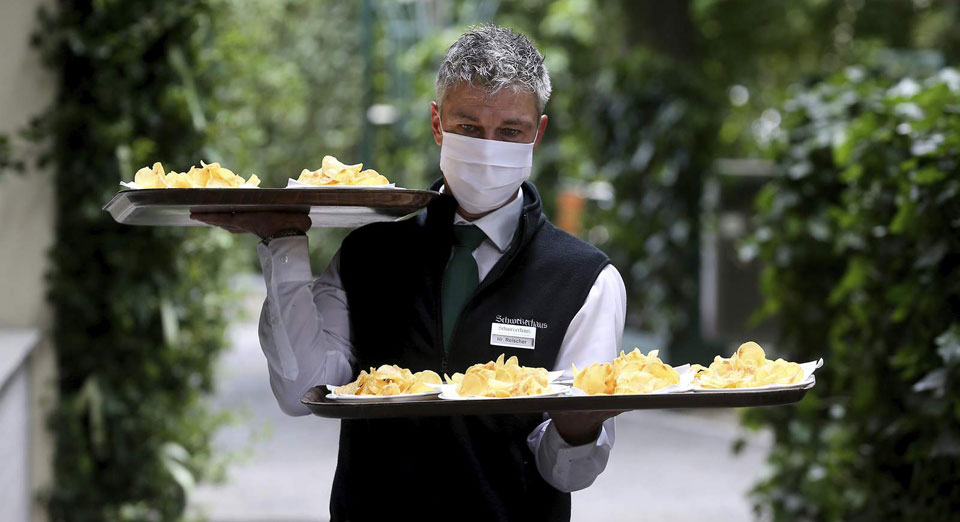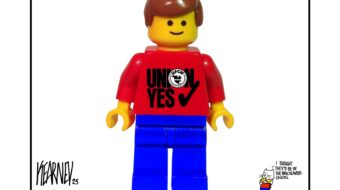
WASHINGTON—The Occupational Safety and Health Administration (OSHA) will “issue by March 15” a Temporary Emergency Standard—to take effect immediately—ordering firms to craft and implement plans to protect their workers and customers against the coronavirus’s spread, its top official says.
Not only that, but OSHA will speed up enforcement against those companies that don’t do so, Jim Frederick, the deputy assistant secretary for Occupational Safety and Health, and his colleagues told a Jan. 29 telephone press conference.
Instead of taking the maximum six months to probe potential violators before acting, or not, the agency’s inspectors will take a few days or weeks, they said.
And to make sure the rest of industry gets the point, they added, OSHA will post releases on its website identifying violators, often. It will also look for patterns in firms that it can then apply to entire industries, said Frederick, the Labor Department’s top career OSHA official. OSHA does not have any officials above him, yet.
The announcements track new Democratic President Joe Biden’s order outlining a comprehensive anti-coronavirus plan for the U.S. Biden’s policies mark a large reversal from the coronavirus denial and inaction of the prior GOP Trump regime.
Biden literally ordered OSHA, and the Mine Safety and Health Administration to write temporary emergency standards mandating companies craft and implement anti-virus protection plans, now.
By contrast, Trump’s inaction was symbolized by one data point Reveal noted in a January sidebar to a story. “According to OSHA records, in response to 1,600 COVID-19 [coronavirus] complaints, inspectors have visited only 56 fast food outlets,” it said.
And Biden’s prior order on Jan. 21, literally telling OSHA to write the emergency anti-virus standard, drew cheers from workers and their leaders.
“By issuing this overdue and desperately needed executive order on his first full day in office, President Biden is clearly prioritizing strong COVID-19 protections for working people,” AFL-CIO President Richard Trumka said then.
Biden’s “swift action will save lives and protect workers who face dangerous conditions daily while serving our communities. Strong enforceable standards would require employers to develop workplace safety plans, implement science-based protection measures, train workers, and report outbreaks. It is a key piece of Biden’s national strategy to ramp up COVID-19 testing, vaccinations, and the production of personal protective equipment so we can beat this virus once and for all.”
While OSHA’s written black-and-white guidance to firms about the virus does not change—yet–the tone of what OSHA will do in monitoring company conduct about the coronavirus, did.
Message is “you must”
“This message doesn’t say to firms ‘You should consider’” certain actions to protect workers against the virus, one top staffer added. “It says ‘You should do’ them.”
Under Trump and his Labor secretaries, enforcement of OSHA’s “General Duty Clause,” which mandates employers must protect workers against hazards, but which isn’t specific, literally ground to a halt until the final weeks of the Republican’s reign.
And despite formal petitions and lawsuits from National Nurses United and the AFL-CIO, the agency refused to issue a coronavirus-specific Temporary Emergency Standard, which would take effect immediately, to force firms to protect workers, notably front-line health care workers, from sickening and dying from the modern-day plague.
The agency’s “guidance” does not have the force of a formal standard it imposes on firms. But Frederick and his colleagues made clear that firms refusing to obey would face the music for their obstinacy.
The guidance urges firms to conduct coronavirus hazard assessments, adopt anti-virus measures—such as mask-wearing, sanitizing, hand-washing, and physical distancing—isolate workers who test positive and “issue policies and procedures in language they [workers] can understand,” Frederick said.
And he reminded firms OSHA will come down hard on those who retaliate against workers who speak up, including in complaints to the agency, about coronavirus hazards in the workplace.
“The message is that employers should have policies and programs in place” to combat the virus “and use them.”
Frederick and his colleagues also said firms must include their workers in identifying virus danger spots and crafting anti-virus plans. The 1970 Occupational Safety and Health Act requires such consultations, but they were sporadic—if they occurred at all—during the Trump regime.
Instead, as NNU frequently points out, bosses at hospitals and other health care facilities would make unilateral decisions about virus exposure, without asking workers in advance about conditions or considering ideas about combatting COVID-19.
The change reflects Biden’s executive order, part of his comprehensive anti-coronavirus strategy. It also reflects demands from workers, organized and unorganized, for protection against the virus, which had killed 440,350 people nationwide in the 54 weeks since the first official case was reported, in Washington state. That’s equivalent to killing all of Oakland, Calif., plus 7,000 more people.
“This guidance is one step in our process to address COVID-19 hazards and to ensure employers and workers have the tools necessary” to stave off infection, Frederick said.
“We are moving as quickly as possible to assess where we are…This the first step. It will not be the last.”










